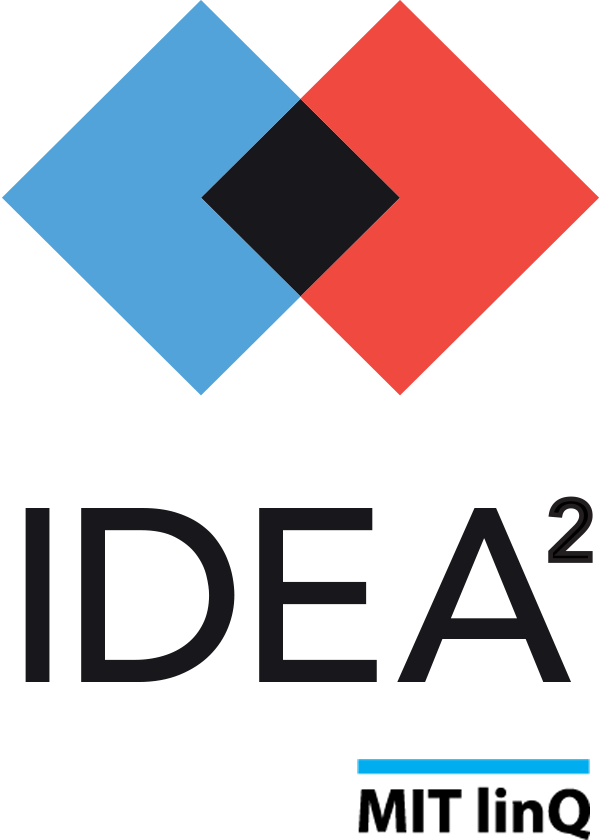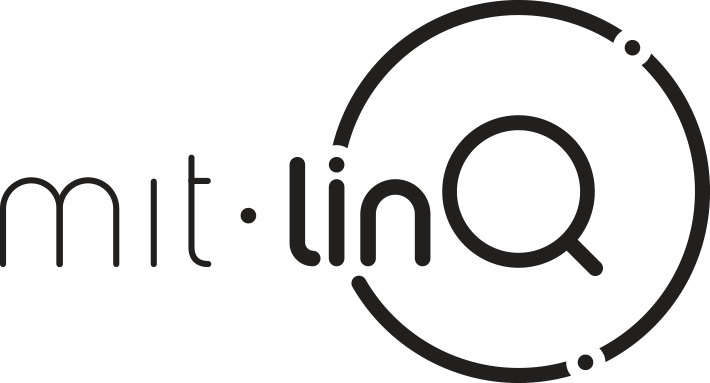
The 2024 cohort of teams drive biomedical technology innovation across a range of urgent medical needs, including maternal and newborn health, cancer therapy, vaccine design, bone regeneration, and more. Read the news announcement introducing the teams.
2024 Teams
Clinbermes
Clinical development of a novel G4-targeting berberine derivative to treat Malignant Mesothelioma
Clinical development of a novel G4-targeting berberine derivative to treat Malignant Mesothelioma
Malignant Mesothelioma (MM) is an aggressive tumor affecting the lining of organs like the lungs, abdominal cavity, and heart. It is rising at 4.5% annually, with a mortality rate of 4.9 per million people (30,433 new cases and 25,576 deaths annually, according to WHO). Pleural MM accounts for 90% of cases. Treatments include surgery, chemotherapy, and radiation, but most patients (>90%) are diagnosed late, with chemotherapy (pemetrexed/platinum) showing limited efficacy and significant side effects. Cancer progression and drug resistance are often due to gain-of-function alterations in oncogenes. Clinbermes' research has demonstrated that targeting the RNA G-quadruplex (G4) in oncogenes with NAX035 can suppress protein creation, offering a revolutionary new treatment mechanism.
Team Lead: Carmen Plasencia
Team Lead: Carmen Plasencia
MyHM
Noninvasive measurement of critical hemodynamic properties to improve preventative care
Sustaining human life relies on effective oxygen delivery, driven by blood flow quality regulated by the heart. Hemodynamics, the measure of this blood flow, is crucial in predicting and treating heart conditions, shock, trauma, and sepsis. Current hemodynamic monitoring methods are mostly invasive, posing risks and high costs, while noninvasive methods lack precision and require professional assistance. Delayed results from these procedures can be life-threatening. The team's solution, an app called 'MyHM,' uses a numerical algorithm to noninvasively monitor hemodynamic stability through easily-attainable measurements. 'MyHM' can measure critical values like stroke volume and cardiac output, enabling doctors and patients to implement preventative care and optimize treatments for at-risk individuals.
Team Lead: Riddhi Bhagwat
Noninvasive measurement of critical hemodynamic properties to improve preventative care
Sustaining human life relies on effective oxygen delivery, driven by blood flow quality regulated by the heart. Hemodynamics, the measure of this blood flow, is crucial in predicting and treating heart conditions, shock, trauma, and sepsis. Current hemodynamic monitoring methods are mostly invasive, posing risks and high costs, while noninvasive methods lack precision and require professional assistance. Delayed results from these procedures can be life-threatening. The team's solution, an app called 'MyHM,' uses a numerical algorithm to noninvasively monitor hemodynamic stability through easily-attainable measurements. 'MyHM' can measure critical values like stroke volume and cardiac output, enabling doctors and patients to implement preventative care and optimize treatments for at-risk individuals.
Team Lead: Riddhi Bhagwat
Prevent Apnea
Pimun, medical device to prevent apnea of prematurity
Pimun, medical device to prevent apnea of prematurity
Apnea of prematurity (AOP) affects most preterm infants, with higher rates in extremely premature births, affecting 2.68 million children annually worldwide. AOP is linked to intermittent hypoxia (IH) events, which cause inflammatory reactions and free radical production, leading to cardiovascular and neurocognitive issues. These issues result in moderate to severe sequelae in 40-50% of cases and death in 10-20% (268,000 to 536,000). PIMUN is a medical device designed to reduce AOP through kinesthetic stimulation on the chest, encouraging breathing in newborns. It features a pneumatic system emitting adjustable air pulses, an inflatable chamber, and a T-shirt to secure the actuator, intended for use in neonatology units for newborns weighing 500-2000g.
Team Lead: María Jesús Álvarez
Team Lead: María Jesús Álvarez
Salmon xenograft
Salmon derived xenograft osteoconductive biomaterial for medical and dental applications
Osteogenic techniques are challenging in medical and dental fields like traumatology, neurosurgery, oral surgery, and dental implantology. Advances in osteogenic/osteoconductive biomaterials include bovine, porcine, synthetic, and human-derived options. However, access to bone reconstruction solutions is often limited by high costs and cultural or religious restrictions. Synthetic biomaterials sometimes underperform biologically. As demand for bone reconstruction grows, these limitations hinder global access. The team's research on salmon-derived hydroxyapatite shows promising in vitro and in vivo results, suggesting it can be a cost-effective, osteoconductive/osteogenic biomaterial. They have provisionally patented Salmoss©, a collagen-enriched hydroxyapatite from salmon bone, which is low-cost, supports a circular economy, and avoids current cultural and religious limitations.
Team Lead: Francisco Muñoz Thomson
Salmon derived xenograft osteoconductive biomaterial for medical and dental applications
Osteogenic techniques are challenging in medical and dental fields like traumatology, neurosurgery, oral surgery, and dental implantology. Advances in osteogenic/osteoconductive biomaterials include bovine, porcine, synthetic, and human-derived options. However, access to bone reconstruction solutions is often limited by high costs and cultural or religious restrictions. Synthetic biomaterials sometimes underperform biologically. As demand for bone reconstruction grows, these limitations hinder global access. The team's research on salmon-derived hydroxyapatite shows promising in vitro and in vivo results, suggesting it can be a cost-effective, osteoconductive/osteogenic biomaterial. They have provisionally patented Salmoss©, a collagen-enriched hydroxyapatite from salmon bone, which is low-cost, supports a circular economy, and avoids current cultural and religious limitations.
Team Lead: Francisco Muñoz Thomson
Soregen
Regeneration of bed sores through rapid vascularization
Regeneration of bed sores through rapid vascularization
Pressure ulcers, or bedsores, remain a significant challenge in modern healthcare. They result from prolonged pressure on specific body areas, causing tissue damage that can escalate into severe wounds. It's important to distinguish between normal bedsores and more critical stage 3/4 bedsores. While normal bedsores are painful and inconvenient, stage 3/4 bedsores involve extensive tissue damage, open wounds, and a high risk of life-threatening infections. Our team proposes developing an injectable hydrogel to address stage III/IV bedsores, promoting rapid angiogenesis (new blood vessel formation) to improve blood flow within deep wounds.
Team Lead: Varun Shah
Team Lead: Varun Shah
SphereBio
A new platform for rationally designed vaccines and therapeutics
A new platform for rationally designed vaccines and therapeutics
In 2023, over 18 million people are estimated to die from infectious diseases and cancer, largely due to ineffective vaccines. This issue arises from challenges in eliciting a robust cellular immune response. The global community calls for new vaccines that are safe, effective, and cost-efficient. SphereBio is at the forefront of this effort, using baculoviruses as vectors to amplify cellular immune responses. By targeting dendritic cells for antigen presentation via the Class I MHC, they achieve responses 30,000 times more potent than subunit vaccines, with a 92% efficacy against Chagas disease in mice. SphereBio is now developing a Virus-like particles (VLPs) platform for streamlined regulatory approvals and efficient production.
Team Lead: Guido Nicolás Molina
Team Lead: Guido Nicolás Molina
Spinally
Neuronal stimulation to improve therapy efficacy and to enhance patients' quality of life by managing pain
Neuronal stimulation to improve therapy efficacy and to enhance patients' quality of life by managing pain
Chronic pain, one of the most common chronic diseases, has significantly increased in recent years, with U.S. cases rising by over 8% from 1997-2014. Key factors include an aging population, more patients with pain-inducing conditions, and lifestyle changes. Based on extensive research and Dr. Carles García-Vitoria's operating room experience, we developed the SCS electrode. This device delivers power directly to the spinal cord, enhancing electrical stimulation effectiveness. Classified as a Class II medical device, the SCS with an external battery offers differential neuromodulation through intrathecal stimulation, optimizing performance while minimizing invasiveness.
Team Lead: Pawel Soluch
Team Lead: Pawel Soluch
Zone of Nerve Injury
Defining the zone and severity of brachial plexus birth injury using Fluorescence lifetime imaging
Identifying the precise zone of peripheral nerve injuries (PNI) intraoperatively is challenging, hindering recovery. Brachial plexus birth injury, a severe form of PNI, results in newborn arm paralysis with an incidence of 0.5 per 1000 births. Traditional diagnostic methods are unreliable (42-85% sensitivity), making recovery unpredictable, with only a 14-65% chance of full recovery by six months. Surgeons must decide which nerves to observe or reconstruct, with nerve growth needed at a rate of 1 millimeter per day. If recovery isn't achieved by 18 months, the muscle remains paralyzed. Fluorescence lifetime imaging (FLIm) offers quick, label-free, intraoperative assessment of PNI, using ultraviolet laser pulses to excite tissue fluorophores and generate real-time tissue-specific signatures. FLIm has successfully delineated tumor margins in other surgical contexts.
Team Lead: Dattesh R. Dave
Defining the zone and severity of brachial plexus birth injury using Fluorescence lifetime imaging
Identifying the precise zone of peripheral nerve injuries (PNI) intraoperatively is challenging, hindering recovery. Brachial plexus birth injury, a severe form of PNI, results in newborn arm paralysis with an incidence of 0.5 per 1000 births. Traditional diagnostic methods are unreliable (42-85% sensitivity), making recovery unpredictable, with only a 14-65% chance of full recovery by six months. Surgeons must decide which nerves to observe or reconstruct, with nerve growth needed at a rate of 1 millimeter per day. If recovery isn't achieved by 18 months, the muscle remains paralyzed. Fluorescence lifetime imaging (FLIm) offers quick, label-free, intraoperative assessment of PNI, using ultraviolet laser pulses to excite tissue fluorophores and generate real-time tissue-specific signatures. FLIm has successfully delineated tumor margins in other surgical contexts.
Team Lead: Dattesh R. Dave

